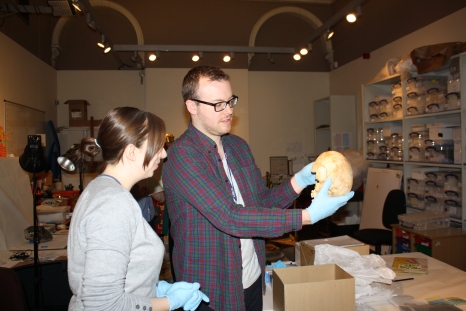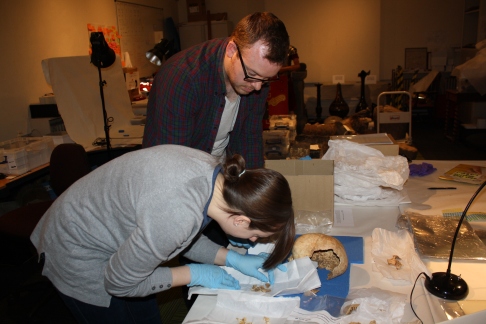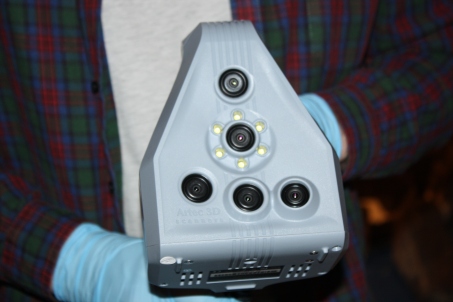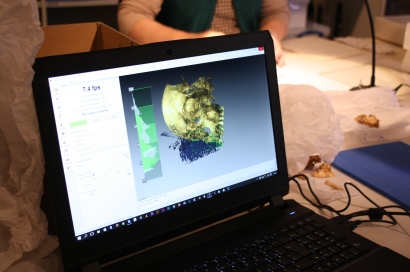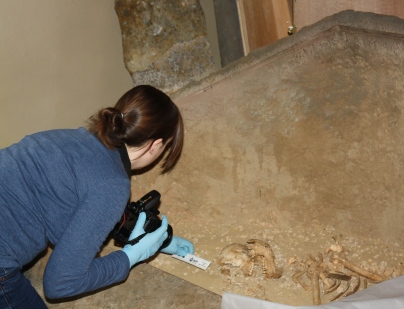This week two of the human skulls at Buxton Museum were scanned to see if these faces from the past can be reconstructed. This will help us tell their story in the new Wonders of the Peak gallery. One skull is of a young person found at Fin Cop Iron Age hillfort, dating from around 300 BCE. The second skull belongs to a man buried around 2000 years earlier at Liffs Low.
The scanning was carried out by Mark Roughley and Dr. Eilidh Ferguson from Face Lab Research Group at Liverpool John Moores University and it was absolutely fascinating watching them work.
The research group at Face Lab provides expertise in analysing the bones of the skull and face. They use it to identify bodies in forensic investigation, and to make archaeological images of historical figures. Mark has a background in medical illustration and Eilidh in forensic anthropology and they were able to explain brilliantly what they were doing and why, and what we could learn about people from looking at their skulls.
First the bones were inspected to see which parts needed to be scanned. Some of the remains were fragmented, but Eilidh could identify whether they were relevant and she helped us identify some unknown parts.
For example, some of the fragments stored with the skull were actually parts of the hand, so we re-labelled their packaging accordingly. Mark and Eilidh then set to work – Mark scanning each part in turn and Eilidh carefully photographing them for later reference back in the lab.
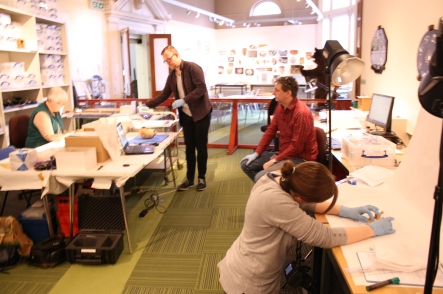
The image above shows Mark scanning and Eilidh working at our photography area in the Project Space watched by Collections Assistant Dave and volunteer Cynthia.
The scanning was done in our public Project Space, so visitors could see what was going on and we could explain about the project.
The Fin Cop skull is relatively complete and has not yet been on display. The Liffs Low skull is part of a complete skeleton which has been displayed in a reconstructed burial. Using a hand held scanner meant it was disturbed as little as possible. We’re hoping there’s enough of this skull to make a reconstruction, but it is quite fragmented with some of the key central part of the face missing. Mark and Eilidh will put all the pieces together digitally to create a more complete image of the skull and hopefully visitors to the new gallery will be able to meet these early Peak District people face to face!
